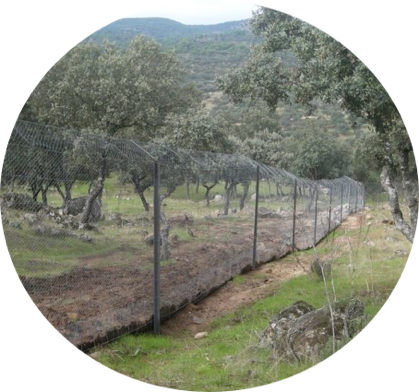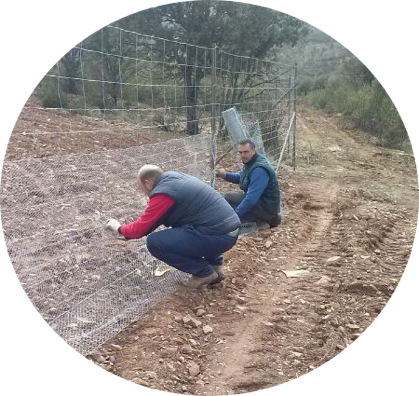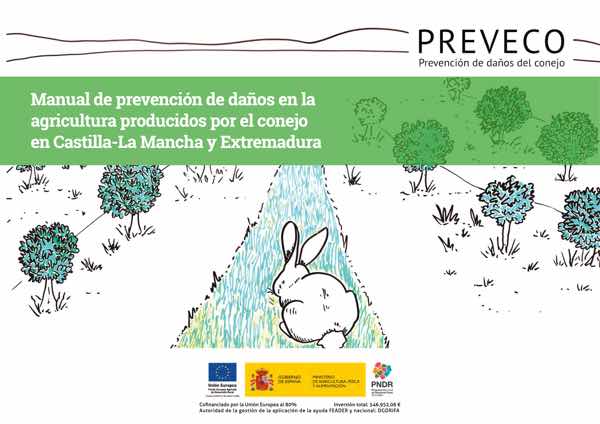GOOD PREVENTION
PRACTICES
In the Iberian Peninsula the rabbit has become a paradigm of an ecological and economic problem with two very different faces: abundance or scarcity. In some regions – generally agricultural landscapes where there is poor natural vegetation cover and so few predators – rabbit populations are on the increase.
PROTECTION MEASURES
The results of the PreveCo confirm that, of the 16 measures tested for herbaceous crops, most have reduced damage by rabbits by over 70%: fences (81.3%), scarers (75.3%), electric fences (73.7%) and vigilance. Other measures including the use of ecological products that inhibit the attraction rabbits feel for crops (95.8%) are still being tested.
The Manual de prevención de daños en la agricultura producidos por el conejo (free access and download) describes the results obtained from the trials run by the group PreveCo.
HUNTING MANAGEMENT
The commonest way of reducing the damage caused by wild animals is to increase the hunting pressure. As the results of the PreveCo reflect, this practice can be highly effective if properly carried out. However, it requires meticulous planning and execution at a number of different levels.
Territorial planning is vital for ensuring that the correct level of hunting pressure is maintained and that there is no negative environmental impact. It is crucial that the hunting pressure is applied at the appropriate sites in each hunting area.
Currently, territorial hunting planning is developed via the declaration of emergency areas, which helps increase the pressure by facilitating the obtaining of permits. Detailed planning is not usually performed and should be undertaken via coordinated groups at municipal level.

Coordination groups

COMBINATION OF MEASURES AND MAINTENANCE
Given the complexity of the factors that affect rabbit populations and the difficulties involved in controlling them, it is recommendable wherever possible to combine various types of management measures to increase their overall effectiveness. This may also help reduce costs. For example, increased hunting may not significantly reduce the damage to crops but, if combined with fences, can be highly effective.
These good practices also need maintenance and, for instance, increasing hunting pressure for just one year will not be sufficient and this extra pressure must be maintained over time. Fences must be periodically checked to patch up any holes that may appear.



